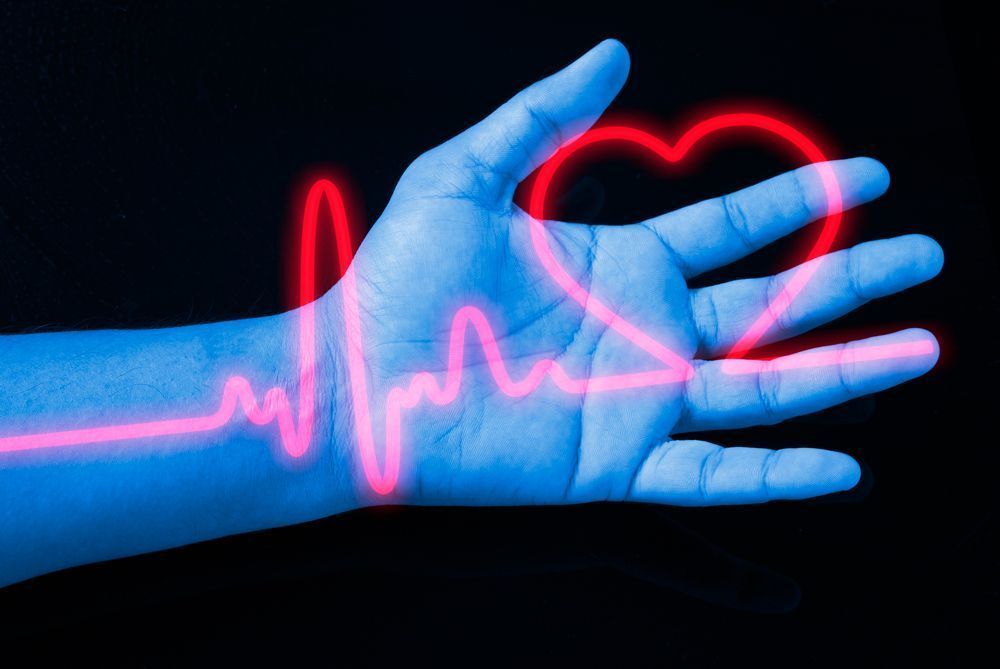
"Wood" Lamp in Diagnosis of Skin Diseases
“Wood” lamp is obtained by passing the light from high-pressure mercury lamps through a filter made of barium silicate containing 9% nickel oxide. This filter only allows the passage of rays between 320-400 nm wavelength. The main purpose of the study of “wood” lamp is to make some substances that are not normally visible to the naked eye visible by utilizing their fluorescence properties. Fluorescence is when a substance absorbs short wavelength (invisible) rays and after a short time emits long wavelength (visible) rays. Fluorescence may occur due to some substances or external factors such as elastin, collagen, aromatic amino acids, melanin precursors and products naturally found in the skin.
Application
The patient should be informed about the procedure to be performed and it should be explained that this light is not harmful.
“Wood” lamp examination should be done in a dark environment, if possible, a windowless room should be preferred.
It should be checked whether there are residues of clothes, drugs, squam and soap that can cause fluorescence on the skin. It should be considered that the substances that can give fluorescence can be removed with washing, and thus false negative results can be obtained, and the patient should be asked when he last took a bath.
It is most commonly used in infectious diseases and pigmentation disorders:
1-Infectious Diseases
a) Fungal Infections: Microsporum canis causes bright green, Trichophyton schoenleinii causes light blue fluorescence. Greenish-yellow or copper-red fluorescence is acquired in tinea versicolor (more pronounced in the follicular form of the disease). Pitriosporum folliculitis can also be distinguished from other folliculitis with the help of this examination.
b) Bacterial Diseases: Yellow or bluish green fluorescence is obtained in Pseudomonas infections (burn wound infection, folliculitis and intertrigo). In addition, in ecthyma gangrenosum lesions, which is an important indicator of pseudomonal sepsis, green fluorescence is obtained in the "Wood" lamp examination of the aspiration fluid obtained by injecting saline into the area and withdrawing it. Thus, the diagnosis of pseudomonal sepsis can be made earlier than the result of blood culture. With "Wood" lamp examination, coral red fluorescence is obtained in erythrasma caused by Corynebacterium minutissimum and orange-colored fluorescence in trichomycosis axillary caused by Corynebacterium tenius.
2-Pigmentation Disorders
“Wood” lamp examination is extremely helpful in evaluating pigmentation changes. It is a method frequently used in the differential diagnosis of birthmarks with a light color from the skin. Nevus anemicus, which has an important place in the differential diagnosis of this group of diseases, can be excluded by "wood" lamp examination. While whiteness due to vascular defects such as nevus anemicus disappears with this examination, hypo- and depigmentations become more evident.
In "Wood" lamp examination, the contrast (contrast) between lesional and normal skin in vitiligo and piebaldism is further increased. Whereas, there is no increase in contrast in Ito's hypomelanosis and nevus depigmentases. In fair-skinned patients, the presence of suspected hypo/depigmented lesions (eg, vitiligo, Ito hypomelanosis) can be determined first, and then their location and borders can be determined by "Wood" lamp examination. In addition, newly developed follicular pigment foci in vitiligo can be detected first with this examination. "Wood" lamp examination can also be used to scan hypopigmented macules, which are often the first skin manifestation of tuberous sclerosis.
If the hyperpigmentation is due to an increase in epidermal melanin, its contrast with normal skin is further increased. However, no significant increase is observed in the increase of melanin in the dermal type. This gives us information about the depth of the spot observed on the surface of the skin. In cases where epidermal and dermal pigment increase coexist, an increase in contrast may be detected in some areas. In addition, "Wood" lamp examination is very useful in order to determine the true borders of the lentigo malignant lesion that extend beyond the clinically visible limits before surgery.
3-Other Diseases
In congenital erythropoietic porphyria and hepatoerythropoietic porphyria, the teeth are red, and in porphyria cutaneous tar, pink fluorescence is observed in the urine.
